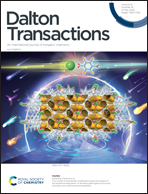Advances and perspectives of actinide chemistry from ex situ high pressure and high temperature chemical studies
Abstract
High pressure high temperature (HP/HT) studies of actinide compounds allow the chemistry and bonding of among the most exotic elements in the periodic table to be examined under the conditions often only found in the severest environments of nature. Peering into this realm of physical extremity, chemists have extracted detailed knowledge of the fundamental chemistry of actinide elements and how they contribute to bonding, structure formation and intricate properties in compounds under such conditions. The last decade has resulted in some of the most significant contributions to actinide chemical science and this holds true for ex situ chemical studies of actinides resulting from HP/HT conditions of over 1 GPa and elevated temperature. Often conducted in tandem with ab initio calculations, HP/HT studies of actinides have further helped guide and develop theoretical modelling approaches and uncovered associated difficulties. Accordingly, this perspective article is devoted to reviewing the latest advancements made in actinide HP/HT ex situ chemical studies over the last decade, the state-of-the-art, challenges and discussing potential future directions of the science. The discussion is given with emphasis on thorium and uranium compounds due to the prevalence of their investigation but also highlights some of the latest advancements in high pressure chemical studies of transuranium compounds. The perspective also describes technical aspects involved in HP/HT investigation of actinide compounds.

- This article is part of the themed collection: 2022 Frontier and Perspective articles


 Please wait while we load your content...
Please wait while we load your content...